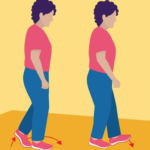Pelvic floor rehab or physical therapy is very effective in helping men recover from the effects of incontinence after undergoing prostate surgery. This form of therapy also reduces pelvic pain. It’s usually prescribed for women who are prone to leaking urine after a few pregnancies. Men leak too; this especially rings true in case of patients who’ve been operated upon for prostate cancer. The chronic pelvic pain caused by the surgery can be alleviated to a large extent with the help of physical therapy that’s specially recommended for pelvic floor muscles.
What Does the Pelvic Floor Refer to?
The pelvic floor contains connective tissue and muscles that provide support to abdominal organs. They control the bladder and bowels while having an important role to play in sexual functions.
Pelvic Problems Specific to Men

Pelvic pain and incontinence are the two main concerns that influence men to go for pelvic floor therapy. Incontinence (difficulty in controlling urination) is generally connected to the issues related to the prostate glands of men. A common condition related to the pelvic floor is an enlarged prostate. As per experts, when this condition escalates, the bladder muscles thicken. They tend to become overactive, thus leading to urine leakage.
Patients suffering from this condition (found in aging men) have a bigger prostrate than normal people. The article “Men’s Health Physical Therapy” from Therapydia explains that strengthening the pelvic floor can help to combat constipation. It can also help the bladder by not making it work harder in order to release urine.
Prostate Cancer Surgery and Incontinence

Men undergoing surgical intervention for prostate cancer face the woes of incontinence, at least temporarily, once the procedure is complete. Men receiving radiation therapy to treat prostate cancer are also known to experience the signs and symptoms of incontinence. Basically, most men undergo the stress of frequent and uncontrolled urination for a while, and to a certain degree, once the process of prostate removal is over. Fortunately, they are capable of regaining control of their urination processes over time, and with the right kind of physical therapy for prostate cancer. The quicker the therapy begins, the faster the urinary control returns.
Yet another commonly found problem of the pelvic floor in men relates to ongoing or chronic pelvic pain. This type of pain can be attributed to the rectum, bladder, or prostate. Pelvic pain usually takes the form of constant cramps with the muscles in the area tightening up. This leads to a long-drawn and uncomfortable cycle wherein the pelvic pain causes tension in the muscles, and hence, more pain.
How Long is Physical Therapy for the Pelvic Floor?
Men may be required to go through regular sessions of pelvic floor physical treatment for about 20 weeks. This duration can even be longer and lead to dramatic results wherein men can strengthen their control over urination. As the resolution of pelvic pain can take a long time, its recommended to trigger off the therapy sessions as fast as possible. Continuous training of prostate and pelvic floor muscles saves pelvic muscles from contracting or relaxing alike; thereby reducing the pain to a large extent.



